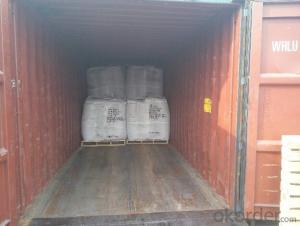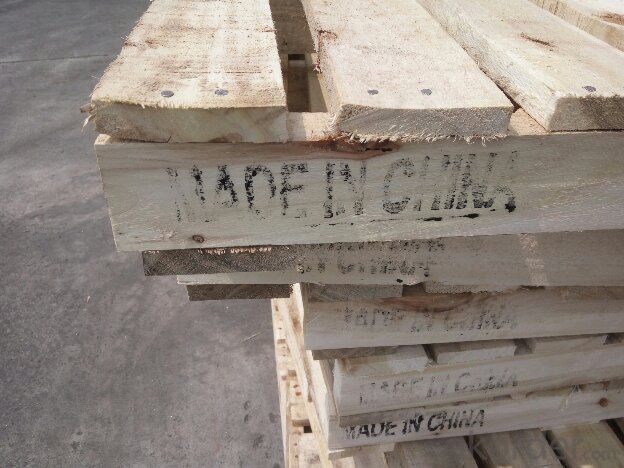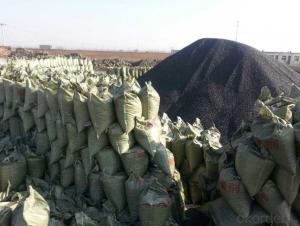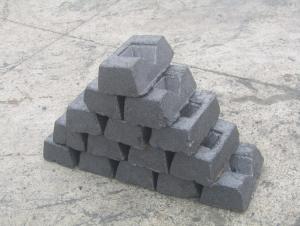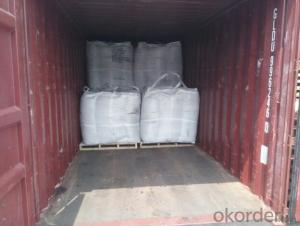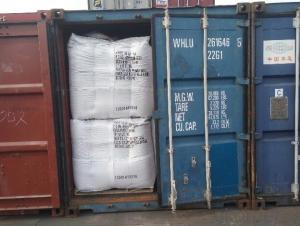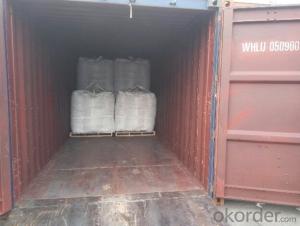S 0.65%max Foundry Coke Made in Shandong
- Loading Port:
- Qingdao
- Payment Terms:
- TT OR LC
- Min Order Qty:
- 21.1
- Supply Capability:
- 1011 m.t./month
OKorder Service Pledge
OKorder Financial Service
You Might Also Like
Brief Introduction
Foundry Coke is the main fuel of melting iron in the oven. It can melt the materials in the over, make the iron reach great heat, and keep good air permeability by sustain stock column. Thus, the foundry coke should have the characteristics of big block, low reactivity, small porocity, enough anti-crush strengh, low ash and low sulphur. We welcome you to visit our factory
The coke handled by our cooperation is made from superior coking coal of Shanxi province. Provided with the advantages of low ash, low sulphur and high carbon. Our coke is well sold in European, American, Japanese and South-east Asian markets. Our owned Coke plant are located in Shanxi Province and supplying of you many kinds of coke.
we supply Foundry Coke long-term, its characteristic is best strength, low sulfur and phosphorus,thermal stability.
Specifications:
ASH % | 8% max | 10% max | 12% max |
V.M.% MAX | 1.5% max | 1.5% max | 2% max |
SULFUR % | 0.65% max | 0.65% max | 0.7% max |
MOISTURE | 5% max | 5% max | 5% max |
Size | 80mm-120mm,80-150,100-150mm, or as request | ||
Features
1. Our quality is always quite good and stable which is producing and packing according to customers' requirements.
2. Putting Client profile into first, achieved mutual benefit.
3. Good partner on business. It's a good and wise choice for customers' to purchase from us. It's our great honor to cooperate with you.
4. We can supply documents as follows:
- bill of loading,
-Invoice,
-Packing List
-Insurance
-standard inspection pictures of the container as specified by INSPECTORATE
-or more requested by buyer.
Pictures
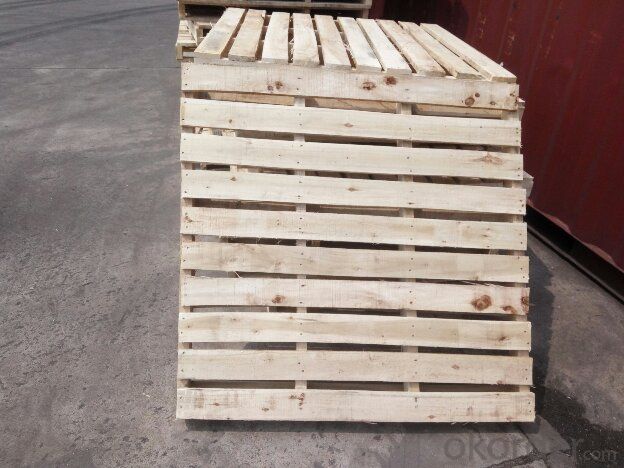
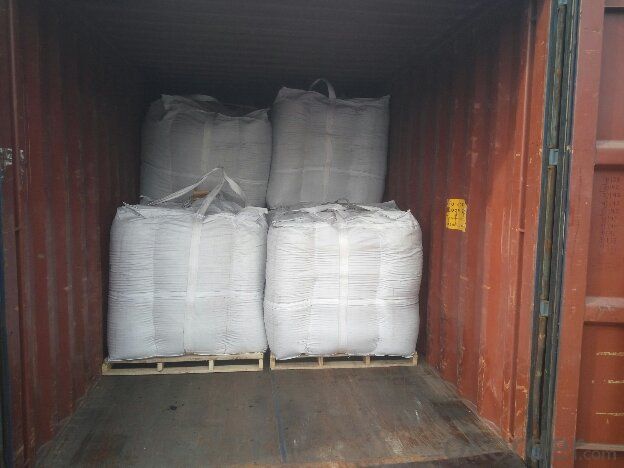
FAQ
1. What is the packing?
In 25kg bag/ In jumbo bags without pallet/ Two jumbo bags with one pallet/ or as customers’ request
2. What is the production capacity?
10 thousand tons per month
3 What is payment term?
Irrevocable LC at sight/ 20% down payment by T/T and 80% against BL copy byT/T/ or to be discussed
4 What is the service?
We will send sample to the third party(CIQ, CCIC, SGS,BV or to be discussed) for checking, and present the test certificate and loading repot of shipment.
- Q: Which is better, 13 and 14 carbon breath tests?
- The following is the range of feesC14- carbon 14 breath test, each province Price Bureau regulations are different, 95-120 yuanC13- carbon 13 breath test, 150-220 yuan
- Q: What are the advantages of carbon-based nanoelectronics?
- Carbon-based nanoelectronics offer several advantages over traditional silicon-based electronics. Firstly, carbon-based materials, such as nanotubes and graphene, have exceptional electrical properties. They can carry high electron mobility, meaning they can transport charges at a much higher speed than silicon. This allows for faster and more efficient electronic devices. Secondly, carbon-based nanoelectronics have excellent thermal properties. They can efficiently dissipate heat, reducing the risk of overheating in electronic devices. This is particularly beneficial for high-power applications, where heat management is crucial. Additionally, carbon-based nanoelectronics are extremely thin and flexible. Nanotubes and graphene can be easily manipulated to create ultra-thin and flexible electronic components. This enables the development of wearable electronics, flexible displays, and other innovative devices that were previously not possible with silicon-based technology. Carbon-based materials also have a higher mechanical strength compared to silicon. They are more resistant to bending or breaking, making them more durable and long-lasting. Furthermore, carbon-based nanoelectronics have the potential for scalability. They can be fabricated using various methods, including chemical vapor deposition and solution-based processes, which offer the possibility of large-scale production at lower costs. Lastly, carbon-based nanoelectronics are environmentally friendly. Carbon is an abundant element and does not pose the same environmental concerns as silicon, which requires energy-intensive processes for extraction and purification. Overall, carbon-based nanoelectronics offer improved electrical and thermal properties, flexibility, scalability, durability, and environmental sustainability. These advantages make them highly promising for the development of next-generation electronic devices.
- Q: What are the industrial uses of diamonds?
- Diamonds have a wide range of industrial uses due to their exceptional physical properties. One of the most common industrial uses of diamonds is in the manufacturing of cutting and grinding tools. Diamond-tipped saw blades, drill bits, and grinding wheels are highly sought after for their superior hardness and abrasion resistance. These tools are used to cut and shape hard materials like concrete, ceramics, and metals. Diamonds also find extensive applications in the electronics industry. They are used as heat sinks in high-power electronic devices and as abrasive materials for polishing and lapping electronic components. The thermal conductivity of diamonds allows them to efficiently dissipate heat, making them ideal for electronic devices that generate a lot of heat during operation. Furthermore, diamonds are used in the production of specialized windows, lenses, and prisms for various scientific and industrial applications. Their optical properties, such as high refractive index and low dispersion, make them valuable for creating precision optics used in lasers, spectroscopy, and telecommunications. In addition, diamonds have found niche uses in the medical and dental fields. They are used in surgical tools such as scalpels and dental drills due to their exceptional hardness and ability to retain sharp edges. Diamond coatings are also applied to medical implants and prosthetics to improve their wear resistance and biocompatibility. Lastly, diamonds are utilized in the oil and gas industry for drilling and exploration purposes. Diamond drill bits are capable of penetrating extremely hard rock formations, making them essential for extracting oil and natural gas from deep beneath the Earth's surface. Overall, the industrial uses of diamonds are vast and diverse, ranging from cutting and grinding tools to electronics, optics, medicine, and even oil and gas exploration. The unique properties of diamonds make them indispensable in numerous industrial applications, contributing to advancements in various fields.
- Q: How is carbon used in the production of ink?
- Carbon is used in the production of ink in various forms, such as carbon black or activated carbon. Carbon black is a fine black powder that is derived from the incomplete combustion of petroleum products. It is commonly used as a pigment in inks to provide a deep black color. Carbon black particles are small and have a high surface area, which allows them to disperse evenly in the ink and provide a consistent color. Activated carbon, on the other hand, is a highly porous form of carbon that is produced by heating carbonaceous materials, such as wood or coconut shells, at high temperatures. It is used in ink production as a filter or purification agent. Activated carbon has a large surface area with numerous microscopic pores, which enable it to adsorb contaminants, impurities, and unwanted substances from the ink. This helps improve the quality and stability of the ink, ensuring a smooth and consistent flow. In addition to its use as a pigment and a purification agent, carbon is also utilized in ink production as a conductive material. Carbon-based inks are commonly used in applications that require electrical conductivity, such as printed circuit boards, sensors, or electronic devices. These inks contain carbon particles dispersed in a liquid medium, allowing them to be printed or deposited onto a substrate to create conductive pathways. Overall, carbon plays a crucial role in the production of ink by providing color, acting as a purification agent, and enabling electrical conductivity. Its versatile properties and wide range of applications make it an essential component in the ink manufacturing process.
- Q: How does carbon cycle through the environment?
- The carbon cycle is the process by which carbon moves between the atmosphere, land, oceans, and living organisms in a continuous cycle. It is crucial for maintaining a stable climate and supporting life on Earth. The cycle begins with carbon dioxide (CO2) in the atmosphere, which is absorbed by plants during photosynthesis. Through this process, plants convert CO2 into organic carbon compounds, such as sugars and carbohydrates, which they use for growth and energy. This carbon is then passed along the food chain as animals consume plants or other animals. When plants and animals die or excrete waste, their organic matter decomposes, releasing carbon back into the environment. This decomposition process is carried out by microorganisms, such as bacteria and fungi, which break down the organic matter and release carbon dioxide as a byproduct. Some carbon may be stored in the soil for long periods, depending on factors like temperature and moisture. This stored carbon in the soil can be released back into the atmosphere through processes like microbial respiration or erosion. Another way carbon returns to the atmosphere is through the burning of fossil fuels such as coal, oil, and natural gas. When these fuels are burned for energy, they release carbon dioxide into the atmosphere, contributing to the greenhouse effect and climate change. The oceans also play a crucial role in the carbon cycle. They absorb a significant amount of carbon dioxide from the atmosphere through a process called carbon sequestration. Marine plants, such as phytoplankton, also photosynthesize and store carbon in their tissues. When these organisms die, they sink to the ocean floor, where the carbon can be stored for long periods in the form of sediment or dissolved in the water. Oceanic circulation and biological processes also redistribute carbon throughout the oceans, with surface water exchanging carbon with the atmosphere. Additionally, the oceans act as a carbon sink, as they can store vast amounts of carbon dioxide, helping to regulate its levels in the atmosphere. Overall, the carbon cycle is a complex and interconnected process that involves various natural and human activities. Understanding and managing this cycle is crucial for mitigating climate change and maintaining the health of our environment.
- Q: What is carbon nanoelectronics?
- Carbon nanoelectronics refers to the field of research and development that focuses on utilizing carbon-based materials, such as carbon nanotubes or graphene, for the creation and advancement of electronic devices and components on a nanoscale level. These nanoscale carbon structures possess unique electrical properties that make them highly desirable for applications in a wide range of electronic devices, including transistors, sensors, and interconnects. One of the key advantages of carbon nanoelectronics is the exceptional electrical conductivity and thermal properties of carbon nanomaterials. Carbon nanotubes, for instance, exhibit excellent electrical conductivity, comparable to copper, but with a much smaller footprint. This property allows for the creation of smaller and more efficient electronic devices, leading to advancements in areas such as miniaturization and energy efficiency. Another noteworthy aspect of carbon nanoelectronics is the immense strength and flexibility of carbon nanomaterials. Carbon-based structures like graphene possess exceptional mechanical properties, making them highly durable and resilient. This property enables the production of flexible and wearable electronic devices that can conform to various surfaces, opening up new possibilities for electronics design and integration. Additionally, carbon nanoelectronics offers the potential for high-speed and low-power electronic devices. The unique electronic properties of carbon nanomaterials, such as their ability to carry electric charge at an extremely high speed, make them suitable for high-frequency applications. Furthermore, the low power consumption of carbon nanomaterials can lead to the development of energy-efficient electronic devices. Overall, carbon nanoelectronics holds great promise for revolutionizing the field of electronics by enabling the creation of smaller, faster, and more energy-efficient devices. Continued research and development in this field are expected to lead to breakthroughs in various industries, including computing, telecommunications, healthcare, and energy.
- Q: What are the effects of carbon emissions on human respiratory health?
- Carbon emissions can have significant negative effects on human respiratory health. One of the primary components of carbon emissions is carbon dioxide (CO2), which contributes to air pollution and climate change. High levels of carbon dioxide in the atmosphere can lead to an increase in the concentration of other pollutants such as particulate matter, nitrogen oxides, and sulfur dioxide. Exposure to these pollutants, particularly fine particulate matter (PM2.5), has been linked to a range of respiratory problems. Inhalation of PM2.5 can irritate the airways, leading to symptoms such as coughing, wheezing, and shortness of breath. It can also exacerbate existing respiratory conditions such as asthma, chronic obstructive pulmonary disease (COPD), and bronchitis. Long-term exposure to high levels of PM2.5 has been associated with the development of respiratory diseases and can contribute to increased hospital admissions and mortality rates. Furthermore, carbon emissions contribute to the formation of ground-level ozone, a harmful pollutant that is a key component of smog. Ozone can cause inflammation and damage to the respiratory system, leading to respiratory symptoms and reduced lung function. It can also worsen existing respiratory conditions and increase the risk of respiratory infections. In addition to these direct effects, carbon emissions also contribute to climate change, which has indirect impacts on respiratory health. Climate change can lead to increased heatwaves and extreme weather events, which can worsen air quality and trigger respiratory symptoms. It can also impact the distribution of allergens such as pollen, mold spores, and dust mites, increasing the prevalence of respiratory allergies and asthma. Overall, carbon emissions have significant detrimental effects on human respiratory health. They contribute to air pollution, which can cause respiratory symptoms, exacerbate existing respiratory conditions, and increase the risk of developing respiratory diseases. They also contribute to climate change, which indirectly impacts respiratory health through changes in air quality and the prevalence of allergens. Reducing carbon emissions and improving air quality is crucial for protecting and promoting respiratory health.
- Q: How to match?Want to breed a batch of roses seedlings, but the seedbed of mud, carbon soil do not know how to get, there is help in this regard...
- Five: sowing, that is, sowing and breeding in spring. Can also be seeding and furrow sowing, usually in mid April to germination. Spring planting and transplanting time autumn planting two, usually in late autumn or early spring before the leaves after the sap flow. Grafting grafting used multiflora rootstock, grafting and grafting of two points. Autumn budding survival rate, grafting position close to the ground as far as possible, the specific method is: in the side branch with rootstock grafting knife on the skin do "T" shaped incision, and then rose from the year growth of branches in a good selection of bud. Insert the bud into the "T" incision, then tie it with a plastic bag and shade properly so that it will heal in about two weeks. Plant ramets breeding more in late autumn or early spring, is the whole rose out of ramets soil, each plant has 1 to 2 branches and with some fibrous roots, the colonization in the basin or open, then can blossom. Cutting method in late autumn or early spring rose dormancy, their mature with 3 to 4 shoots cuttings. If the shoots are cut, shade properly and keep the seedbed moist. After cutting, the root can take root in 30 days, and the survival rate is from 70% to 80%. If the cuttings are dipped in the root, the survival rate will be higher. Layerage general in the summer, is the rose from parent branches bent down and pressed into soil, buried in the central branches, the lower half circle of the bark off, exposing branch end, the branches grow adventitious roots and grow new leaves, and then cut off the mother. As for the preparation of nutritious peat soil according to the following formula: two (1) mixture of peat mire soil and vermiculite, the proportion (by dry weight) for each 1/2 or 3/5:1/4; 2/5 or 3/4:1/4, then add the right amount of limestone (dolomite) and sandy fertilizer. (2) peat swamp soil 25-50%, vermiculite 0-25%, plus 50% of the soil. All of the above materials have been bought in the flower market.
- Q: How is carbon used in the production of construction materials?
- Carbon is used in the production of construction materials through a process called carbonization, where organic materials such as wood, coconut shells, or coal are heated to high temperatures in the absence of oxygen. This results in the removal of other elements and the production of carbon-rich materials like activated carbon or charcoal, which can be used in various construction applications such as concrete production, filtration systems, or as a component in composite materials.
- Q: What is the structure of graphite, another form of carbon?
- Graphite possesses a unique carbon form with a structure that differs from diamond or amorphous carbon. It showcases layers of carbon atoms arranged in a hexagonal lattice. Covalent bonds connect each carbon atom to three neighboring carbon atoms, resulting in a two-dimensional sheet-like structure. Within each layer, the carbon atoms bond together through robust covalent bonds, creating a flat network. The carbon-carbon bonds in graphite are notably stronger than typical single bonds, ensuring the structure's high stability. The hexagonal lattice arrangement of carbon atoms forms a honeycomb-like pattern, giving graphite its characteristic appearance. The layers in graphite remain cohesive due to weak van der Waals forces, enabling easy sliding between them. This attribute grants graphite its lubricating properties and allows it to leave marks on paper when used as a pencil lead. Additionally, the arrangement of carbon atoms in graphite contributes to its exceptional electrical conductivity. The structure's delocalized electrons can move freely along the layers, facilitating the flow of electric current. This feature renders graphite valuable in various applications, including electrical components, electrodes, and as a lubricant in high-temperature environments. In conclusion, graphite's structure comprises layers of carbon atoms organized in a hexagonal lattice. These layers are bonded through strong covalent bonds within each layer and held together by weak van der Waals forces. This distinctive structure grants graphite its unique properties, such as its lubricating nature, electrical conductivity, and versatility in diverse industrial applications.
Send your message to us
S 0.65%max Foundry Coke Made in Shandong
- Loading Port:
- Qingdao
- Payment Terms:
- TT OR LC
- Min Order Qty:
- 21.1
- Supply Capability:
- 1011 m.t./month
OKorder Service Pledge
OKorder Financial Service
Similar products
Hot products
Hot Searches
